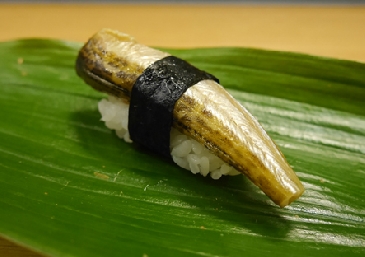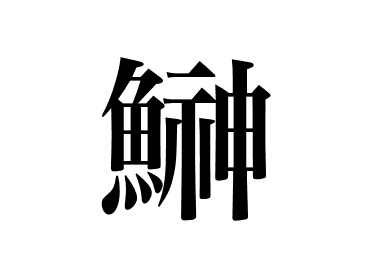Silver-skinned


Sailfin sandfish (Hatahata)
【Nigiri sushi: Hikarimono】
Sailfin sandfish (Hatahata) is distributed in the Sea of Okhotsk, the Sea of Japan north of Shimane Prefecture, and the Pacific coast of Hokkaido. It inhabits the seafloor at depths of 100 to 500 meters. It is small, about 15 to 20 cm long, with no scales on their bodies and brown speckles on their dorsal surfaces. The ventral side is white. In the past, Hatahata were caught in large numbers along the coasts of Akita and Yamagata prefectures. However, the eggs attached to seaweed have been overfished, and the catch has decreased over the years, with Tottori Prefecture now the main production area. In recent years, many of them have been imported from Korea.
Hatahata are mainly divided into two groups: the eastern coastal group of the Korean Peninsula and the northern group of the Sea of Japan, which spawns off Akita Prefecture and elsewhere. The fishing season in Akita is a very short period from late November to December. And the females have eggs. On the other hand, the fishing season in Tottori is from September to May, and instead of having eggs, they are fatty. Both are sometimes called Shirohata.
Its flesh has a light flavor with few peculiarities and a hint of sweetness, making it very delicious. Its meat is easy to remove and does not become tough when cooked, making it suitable for a wide range of dishes such as grilled, simmered, and one-pot dishes. Larger sizes tend to have more fat, so those over 20 cm in length are certified as Torohata (trademark registered in 2013), among Tottori's Hatahata.
In Akita and other areas, it has long been used for Bouzushi and Nigiri sushi. Hatahata came to be used as a sushi topping because the fishing season for Hatahata coincides with the time when the supply of Kohada, an essential ingredient in Edomae sushi, became unstable. It has a moderate sweetness and a unique flavor and goes well with vinegared rice.
Main production area
Tottori Hyogo Akita
Season
Autumn-Spring

